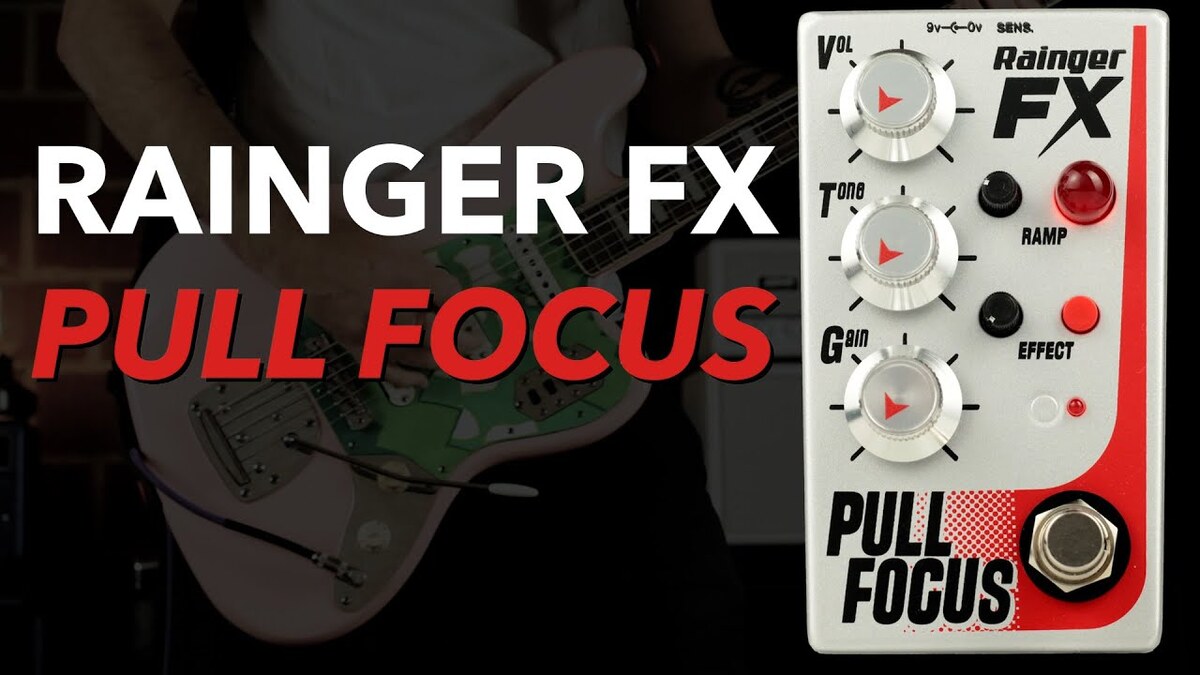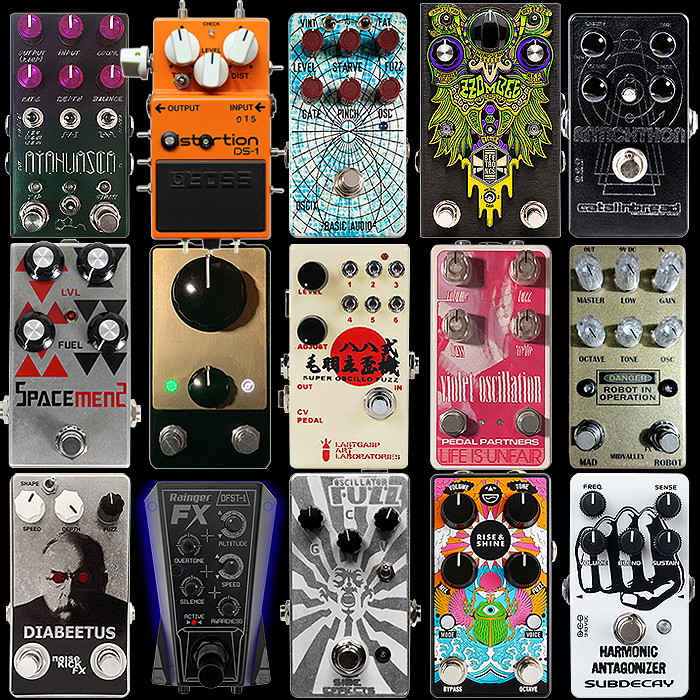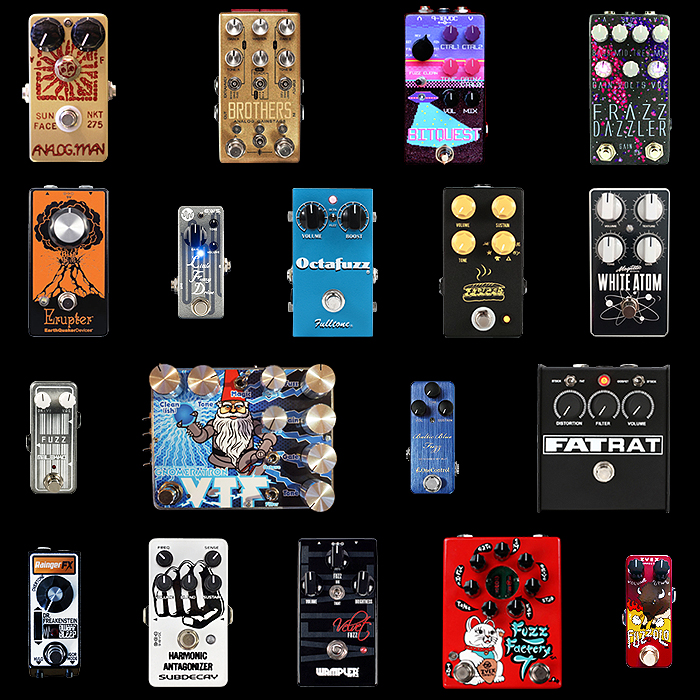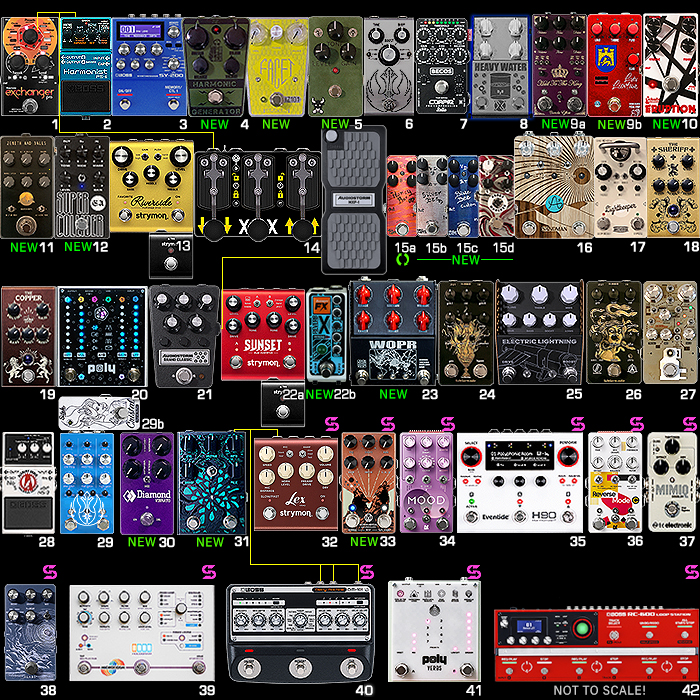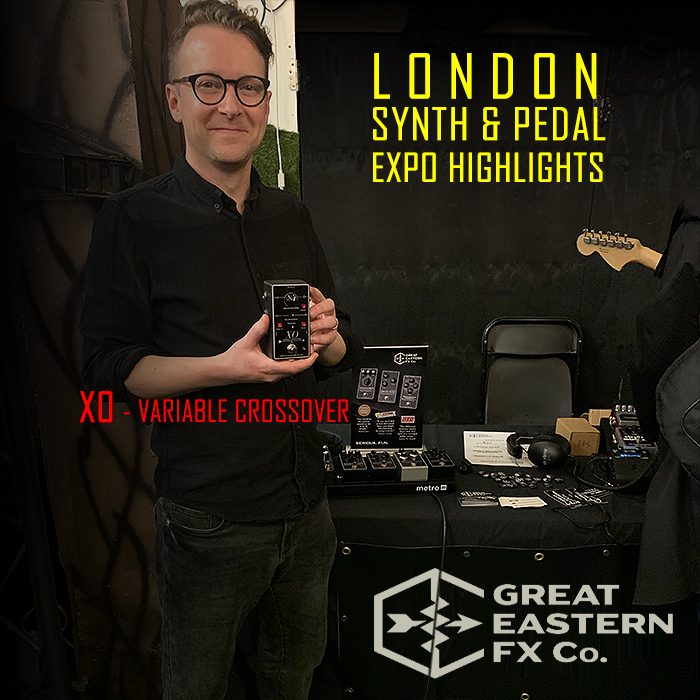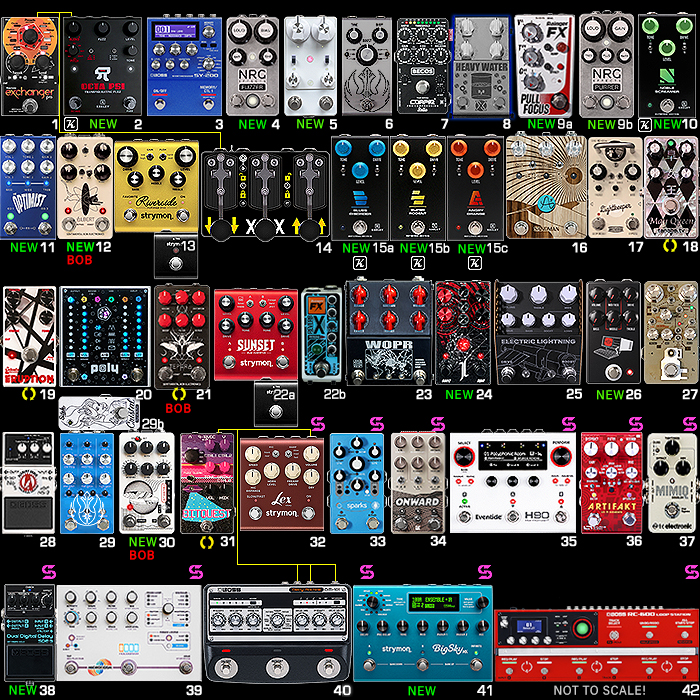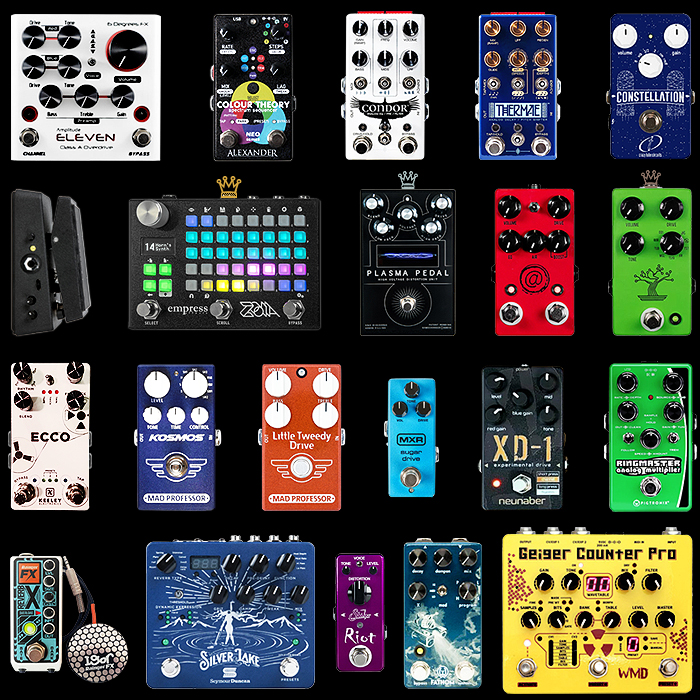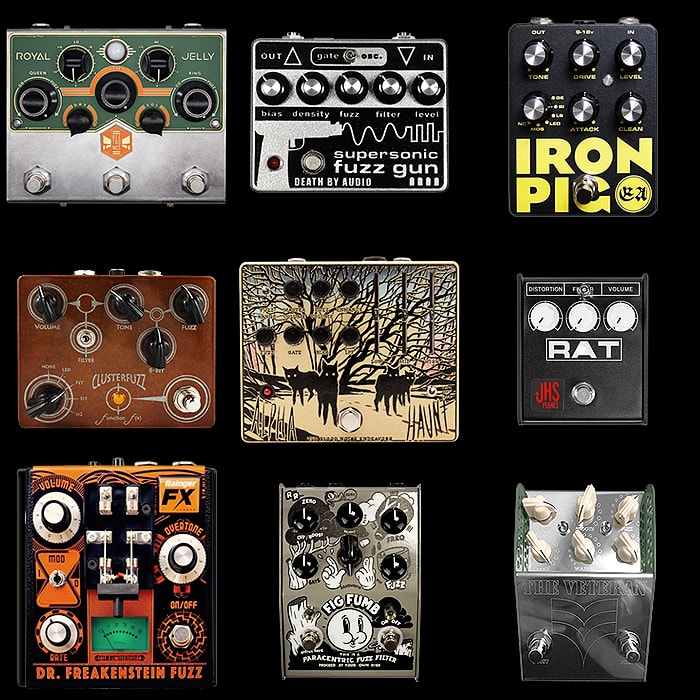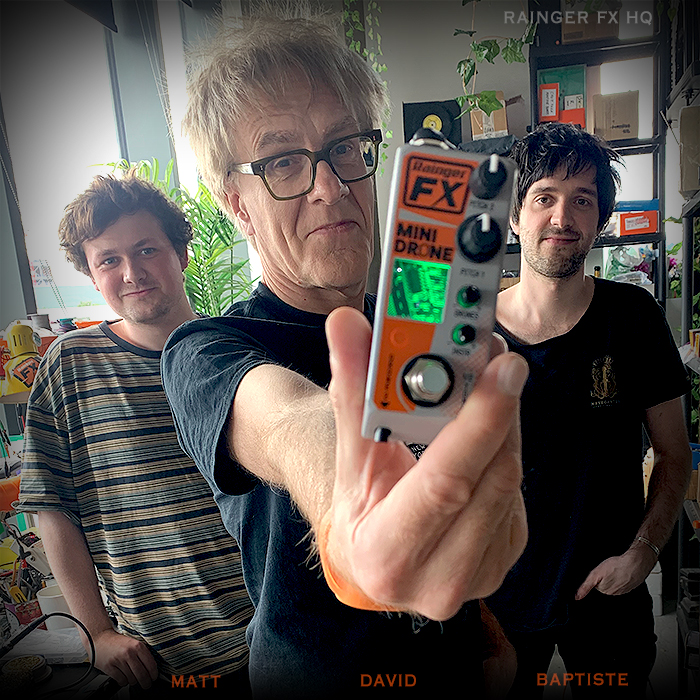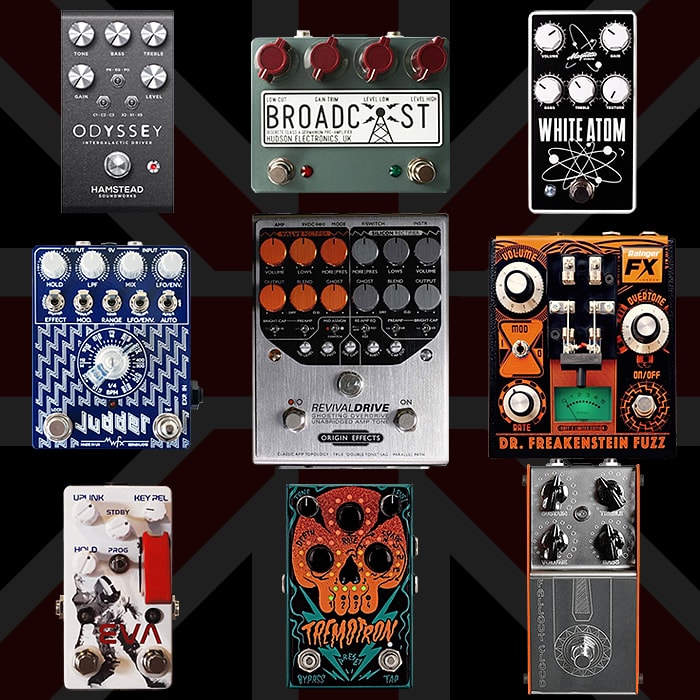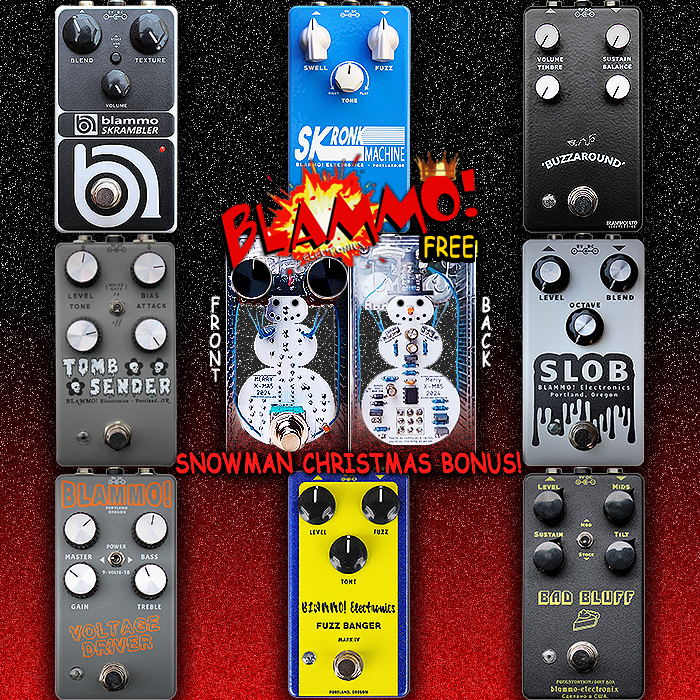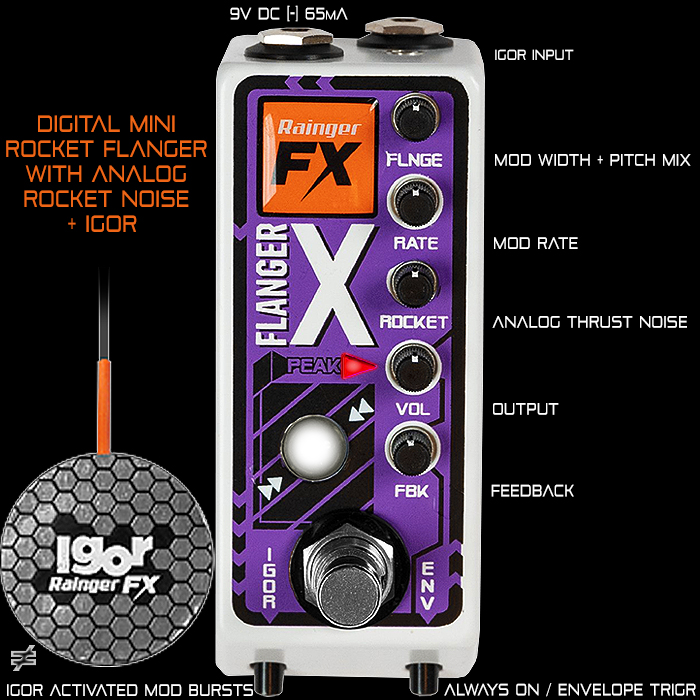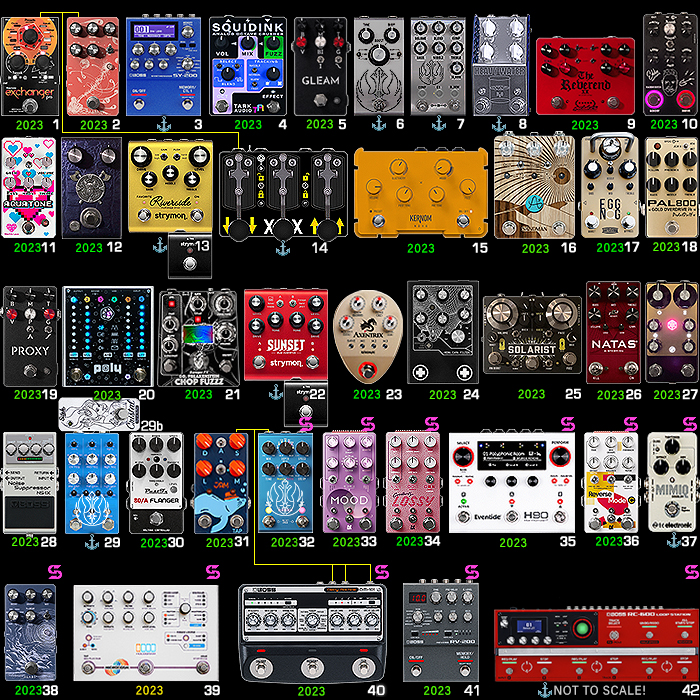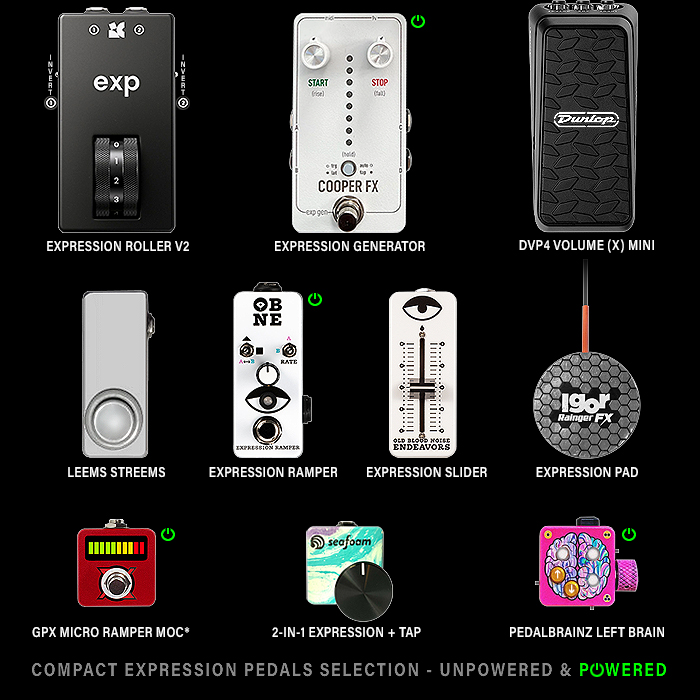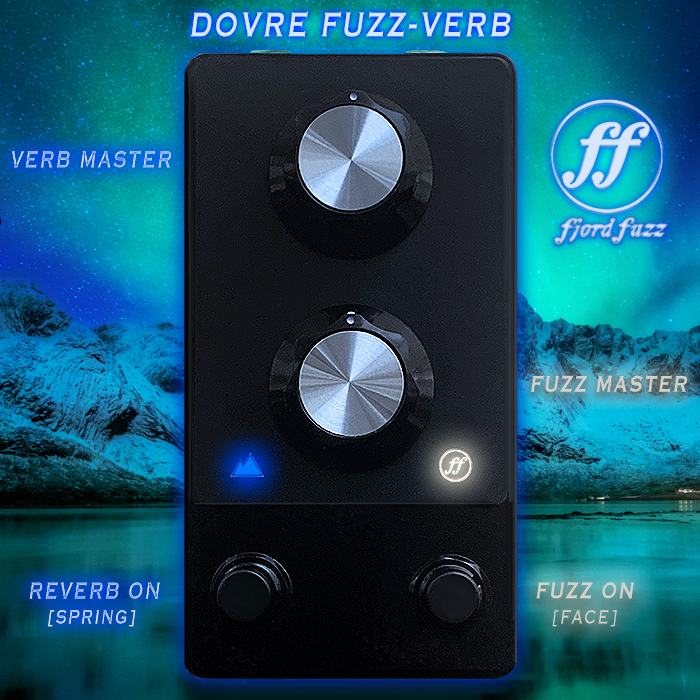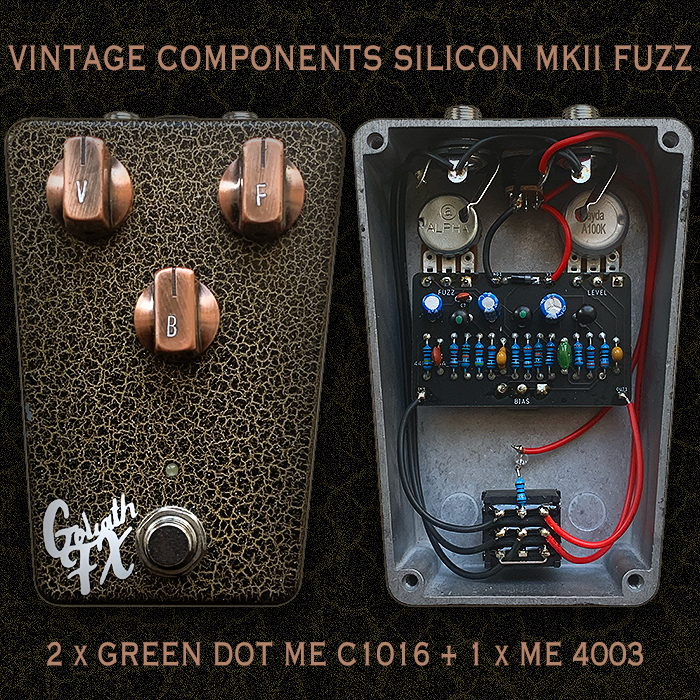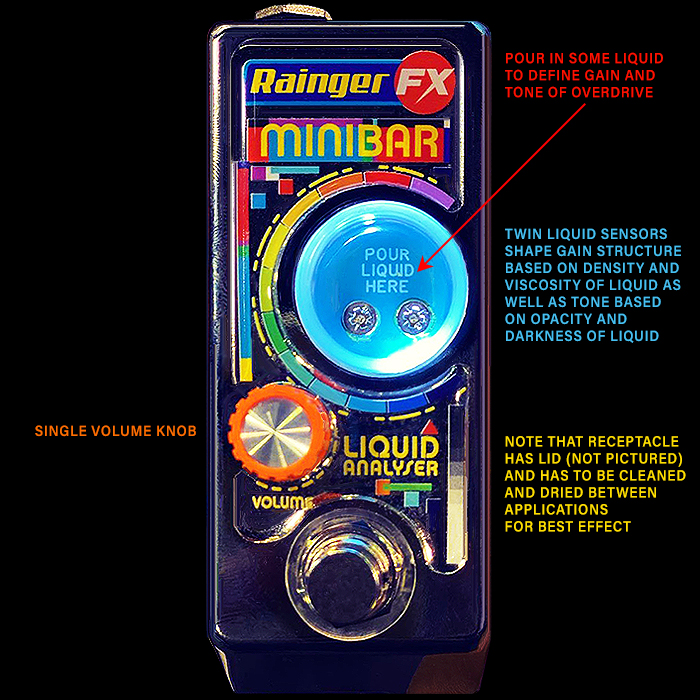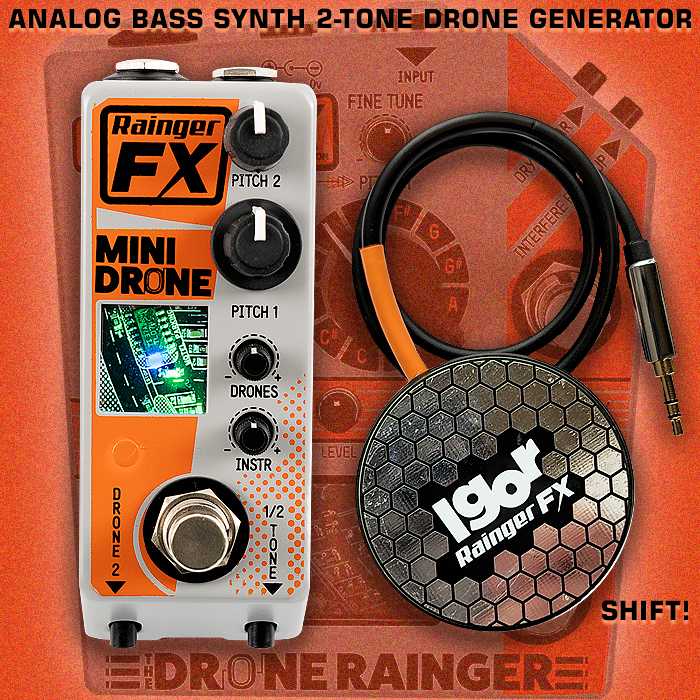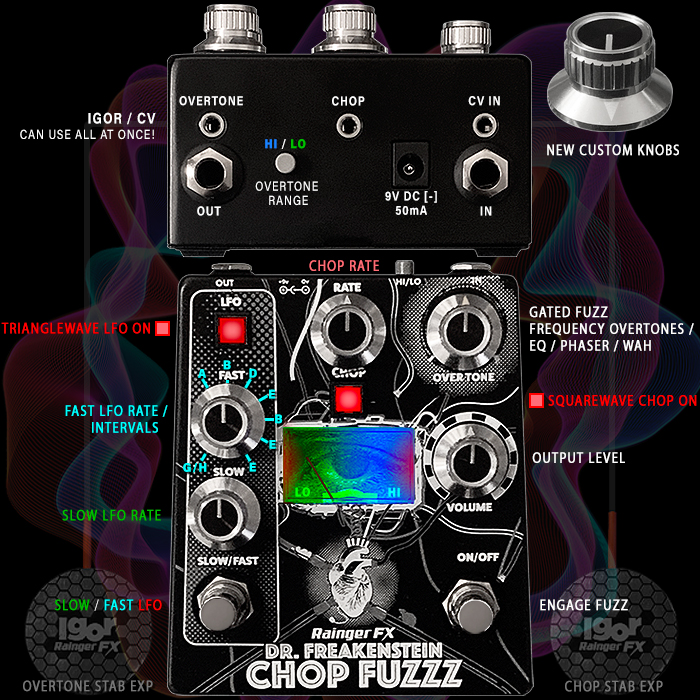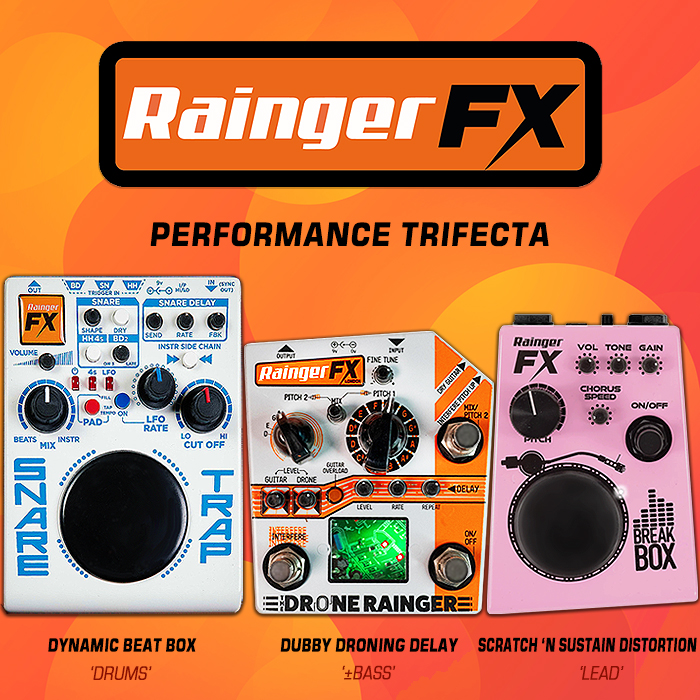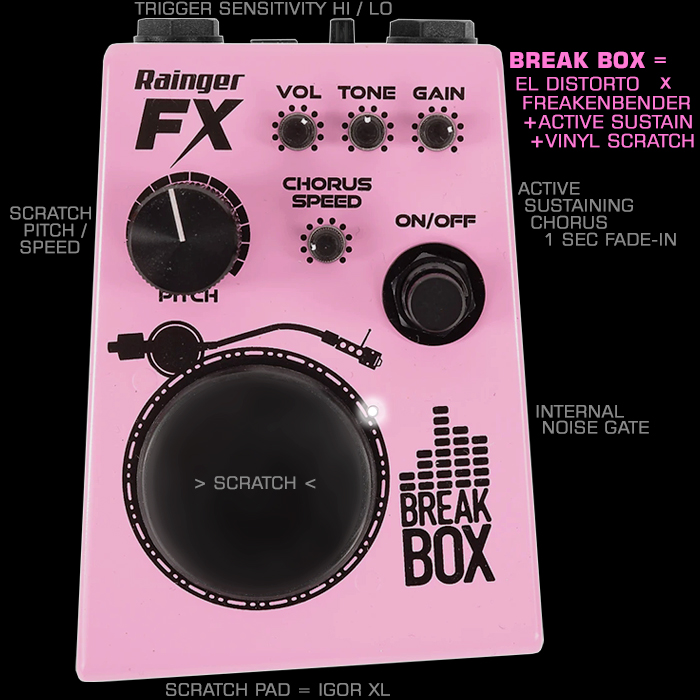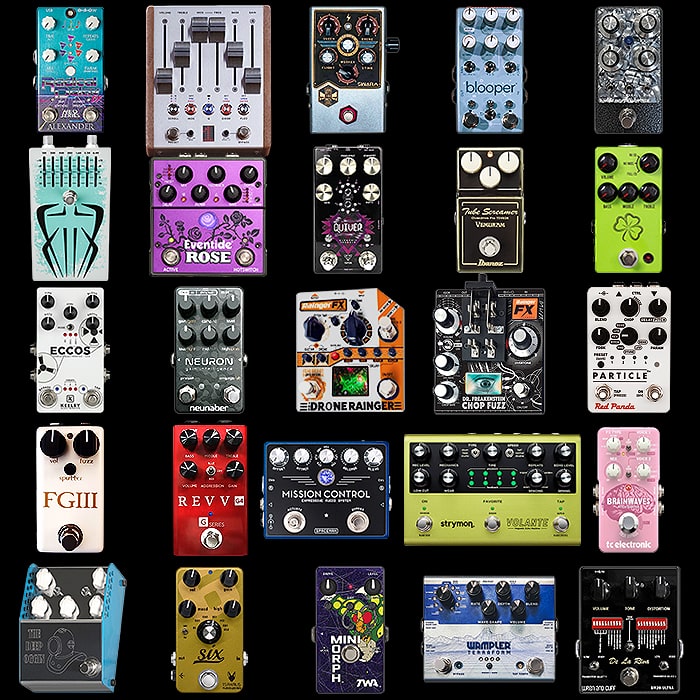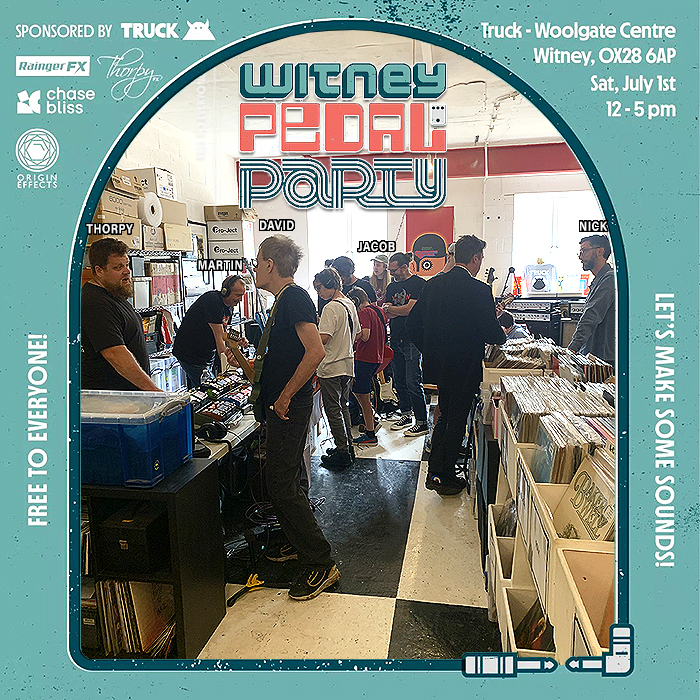The Rainger FX Pull Focus Sustaining Distortion represents a greatest hits compilation of sorts - in being evolved from the Freakenbender, Break Box, and Reverb-X pedals
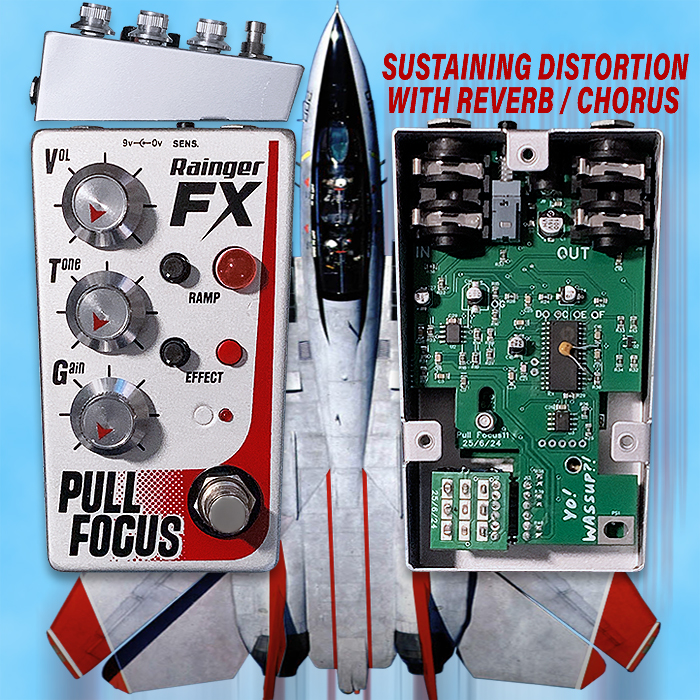
So what we have here is a distortion and tone stack evolved from David’s El Distorto (2011) and Colorsound Freakenbender collaboration (2017), a chorus evolved from the Break Box (2022), and a Reverb evolved from the Reverb-X (2018) - but undistorted. We then have an automated digital gate which keeps everything tight and articulate.
The reason the pedal is called the Pull Focus - is all about the impact of the sustaining ambience / modulation effect of this pedal - where you sort of get the feeling of being closer to or further away from the core of that sound - much in the same was as the camera Pull Focus in cinematography.
And what is that fighter jet doing in the visual you ask? Well - actually David told me that the enclosure artwork was inspired by fighter jets of the 80’s which had those racing stripe paint jobs. I could not find proper / usable photographic references to those - so I borrowed the most famous of the 80’s jet fighters - the F-14 Tomcat from Top Gun - and applied my own colour highlight accents! UPDATE! Apparently it was supposed to be fighter jets of the 60’s - but David saw my visual and liked it - so I guess it’s a slightly anachronism. Or time displacement, or even an asynchronous anomaly - but it looks good and so it will stand!
You could say the side profile of the pedal is a little reminiscent of a stealth fighter - with those interesting angular slopes. This is the first time we get this format of compact enclosure - which is ever so slightly fluted - or wider at the top - and an overall wedge shape. In fact David and the team like it so much that there are already a few further projects in progress based on that format! I really love the overall look of that pedal - with that cool sort of aircraft chassis looking silver paint job, red accents, and more of those custom knobs we first saw on the Dr Freakenstein Chop Fuzzz!
Controls : Sensitivity / Gate button on top edge, Master Volume, Tone, Gain, Fade-in Ramp (Sustain Offset / Pre-Delay, Effect Intensity (Small Slight > Big Huge).
The 3 larger knobs and push button on the top edge control the Fuzz for the most part. The Sensitivity button is for if you have low output pickups - engaging that button lowers the dynamics of the fuzz, and the impact of the gate. I never felt I needed to go anywhere near that button! In most cases pressing that button yields lesser results - unless you have particularly low output pickups. I have the pedal fairly near the front of my chain for just in case - it sounds pretty magnificent in any case!
The right-hand mini-knobs and push button control the sustaining Reverb and Chorus. The Ramp knob controls the fade-in - i.e. when the sustaining ambience impacts. If you dial that knob all the way back you get instant impact, if you wish to turn the Effect off - you max out that control - which introduces an almost infinitely time-lag on the fade-in. The handy RED Led pilot-light lights up to indicate when the Fade-in occurs - which is a useful visual cue for getting to the optimal settings fort that - particularly when syncing to a pattern / rhythm,.
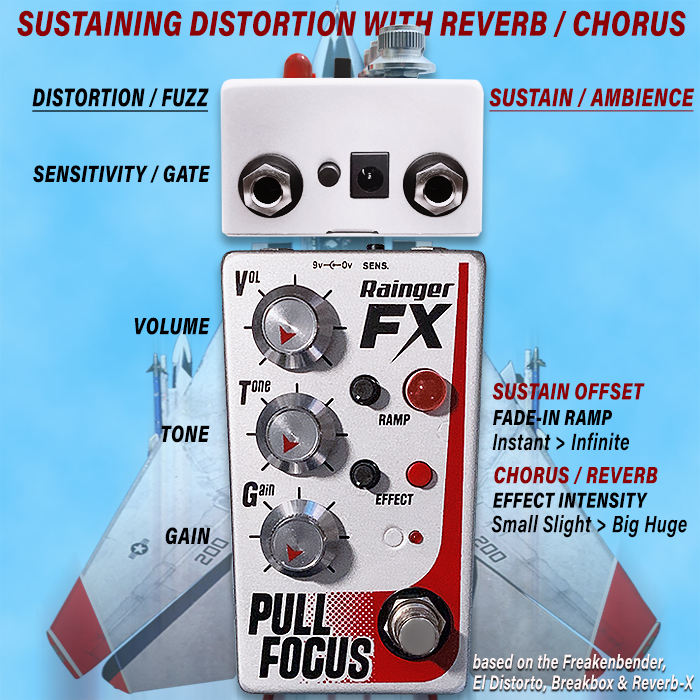
The Red push-button allows you to select between Reverb and Chorus - where the Effect mini knob sets the size and intensity of the effect - for instance for the Reverb it goes from short small space reverb up to a fairly massive big space reverb at its peak.
It definitely has that kind of MKIII / MKIV Tone Bender sort of style of distortion - relatively smooth but incredibly sustaining and can be searing if you crank the Fuzz controls up. I immediately detected a sort of Fuzz voicing in the mix - while for many this will just be an amazing sort of smooth distortion.
There is certainly plenty of range on all of those dials. Where I operate with various different combinations - both the Chorus and Reverb voicings are excellent, and the core Distortion is killer! A lot of the time I just have the Ramp knob dialled all the way back for instant sustaining impact - but I do occasionally dial it up for that cool offset onset - where my favourite longer interval is at around 2 o'c, and where 3 o'c is about as much offset as is comfortable for me. Gain for me is optimal from around 9 o'c and through to circa 3 o'c. There's so much volume on tap - I don't need to go much above 1 o'c - and Tone is simply adjusted to taste and for effect - where mine is mostly between noon and 3 o'c - you tend to vary that in line with the Gain - there's a fair amount of interactivity between those dials.
A fantastic Chorus-Verb-Gated-Distortion therefore - and yet another Rainger FX cold classic in the making!
The Pull Focus goes for £239 and equivalent ($239 / €289) and is of course available from the Rainger FX Webstore right now, as well as at International Dealers.


Demos
